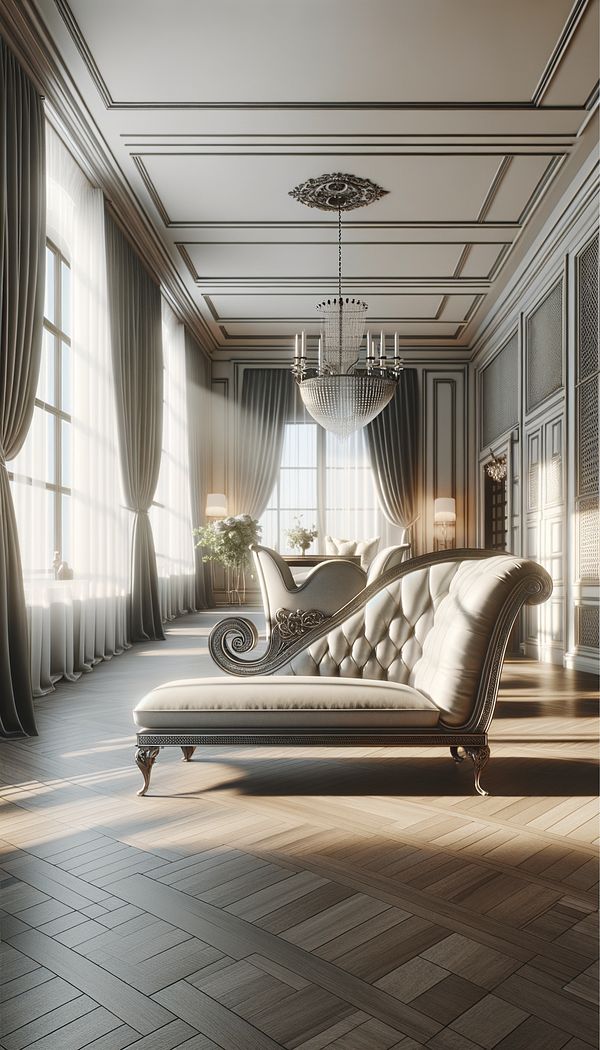What is a Chaise Longue?
A long chair designed for lounging with the legs extended.
Description
A chaise longue (often misspelled as 'chaise lounge' in English) is a furniture piece that combines the support of a chair with the comfort of a daybed. The name comes from the French words for 'long chair,' reflecting its elongated design that allows a person to recline comfortably with their legs extended. Traditionally, the design includes a backrest at one end, sometimes accompanied by one or two armrests. Ideal for both sitting and lying positions, a chaise longue is a versatile piece recognized for its luxurious appeal in both indoor and outdoor settings.
While the origins of the chaise longue can be traced back to ancient Egypt, it gained prominence in France during the 16th century among the aristocracy. The design has evolved over centuries, incorporating various styles from the ornate of the Rococo period to the minimalist modern designs of today. Depending on its design, a chaise longue can add a touch of elegance, sophistication, or contemporary chic to a space.
Usage
In interior design, a chaise longue can serve multiple functions. It can be a statement piece in a living room, a cozy reading nook in a library or bedroom, or a luxury addition to a large bathroom. Outdoors, it's commonly found beside pools and on patios, offering a stylish lounging option. The materials and design of the chaise longue vary widely, from plush upholsteries such as velvet or leather for indoor use, to durable, weather-resistant fabrics and materials suitable for outdoor use.
FAQs
-
Can a chaise longue be used as a regular sofa?
Yes, a chaise longue can function similarly to a sofa, especially in smaller spaces or as part of a larger sectional seating arrangement. However, its unique design is more conducive to lounging and relaxation.
-
Are there different types of chaise longues?
Yes, chaise longues come in various designs, including the traditional with a single armrest and backrest, the Méridienne with asymmetrical ends, and the Récamier with two raised ends and no armrests, among others.
-
How do you pronounce 'chaise longue'?
'Chaise longue' is pronounced as 'shayz-long,' with the 'ue' often silent in English pronunciation.
Practical Application
When incorporating a chaise longue into an interior design, consider the space and the piece's orientation to promote ease of movement and a cohesive look within the room. It's also important to select a style and material that complements the room's overall decor. For outdoor use, ensure that the material is suitable for the intended environment, offering both comfort and durability against the elements.
-
Design Styles478 articles
-
Furniture Types599 articles
-
Decorative Objects240 articles
-
Space Planning & Layout134 articles
-
Textiles & Upholstery252 articles
-
Papier MâchéPapier mâché is a crafting material made from paper pieces or pulp bound with an adhesive such as glue, starch, or wallpaper paste.
-
QuiltA quilt is a multi-layered textile comprised of a woven cloth top, a layer of batting or wadding, and a woven back, combined using the technique of quilting.
-
EmbossedEmbossed refers to a surface decorated with a raised or recessed design.
-
VintageVintage refers to items, especially furniture and decor, from a previous era that have a sense of history and timeless appeal.
-
AsymmetricalAsymmetrical refers to a design that is not symmetrical, exhibiting balance through differing elements.
